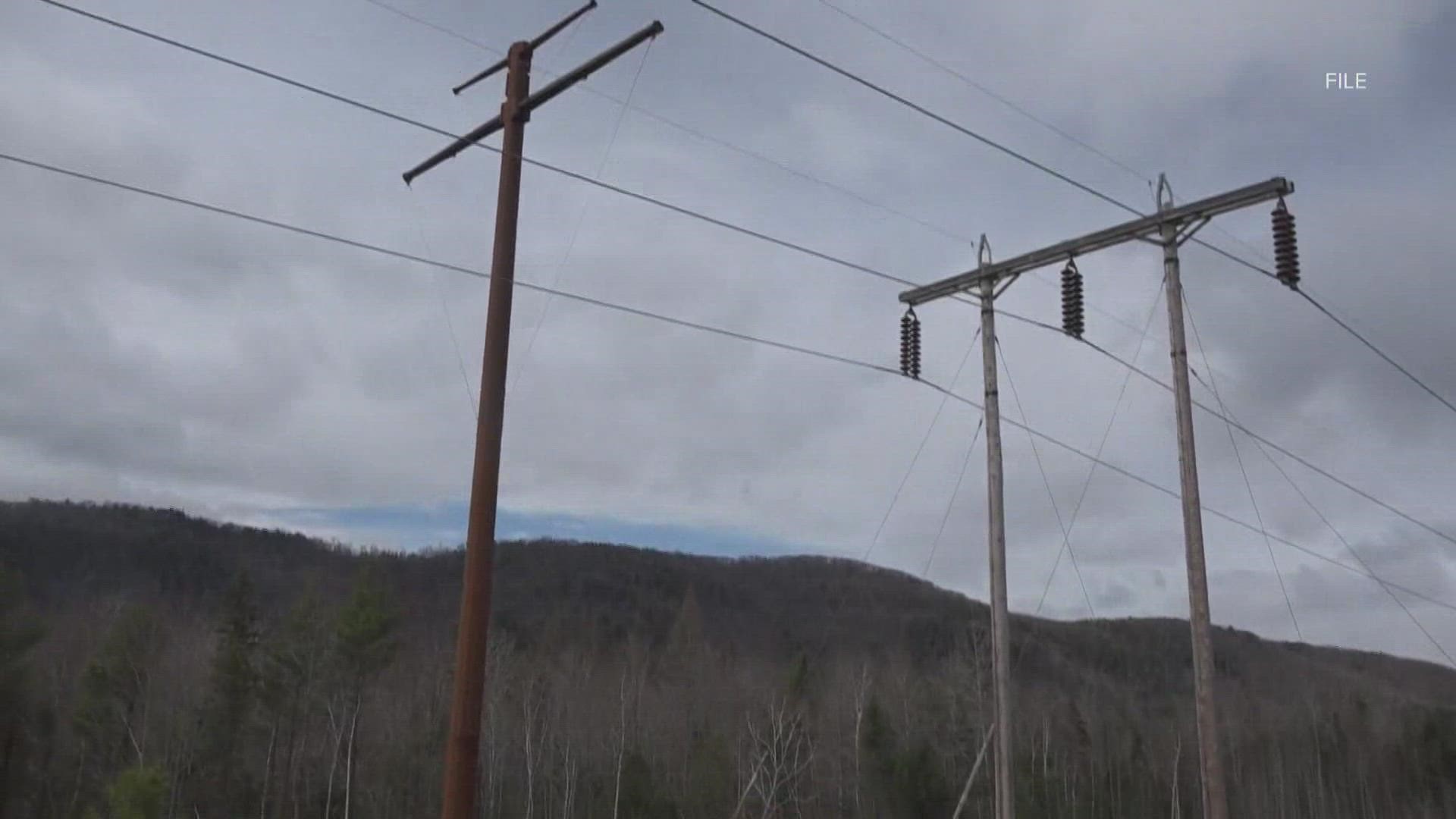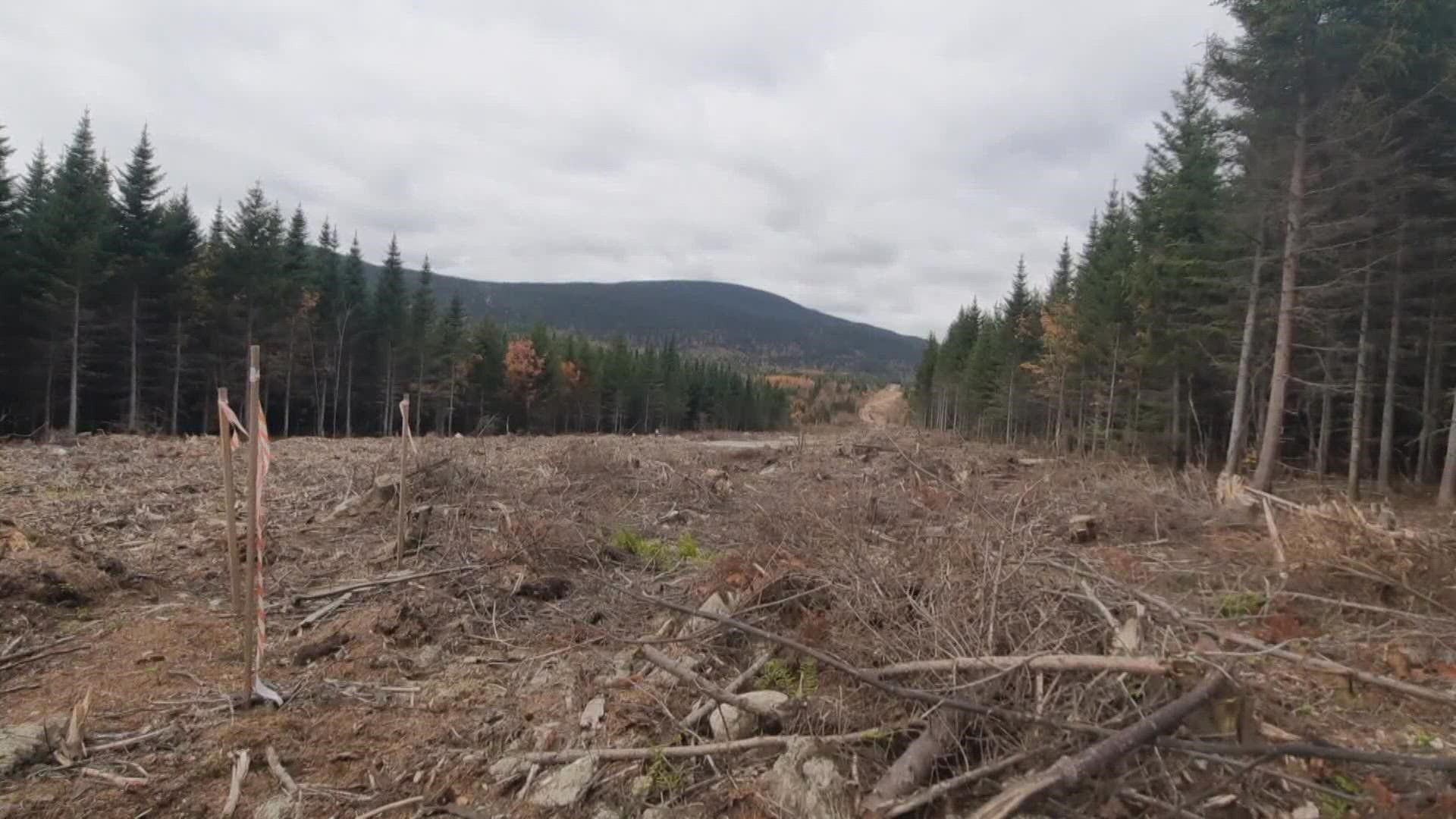Verifying claims from last week's 'Question One Forum'
NEWS CENTER Maine held a 'Voice of the Voter' forum regarding 'Question 1' last week, here's what we've been digging into.

It's one of the most most expensive campaigns in Maine's history and one initiative that has been both contentious and confusing: Question 1.
The question was initially presented to Mainers as a petition which received more than 80,000 signatures, more than enough for the secretary of state to certify that it be on our ballots in November.
Next month, Mainers will head to the polls to cast their vote on the issue. Question 1 reads:
Do you want to ban the construction of high-impact electric transmission lines in the upper Kennebec region and to require the legislature to approve all other such projects anywhere in Maine, both retroactively to 2020, and to require the legislature, retroactively to 2014, to approve by a two-thirds vote such projects using public land?
Last week, NEWS CENTER Maine held a 'Voice of the Voter' forum regarding the ballot question. Here are some of the claims made by participants we've been digging into.
How many jobs will the corridor project bring to Maine?
During the debate, President and CEO of NECEC, Thorn Dickinson said the project would bring hundreds of jobs to Maine, adding there were more than 400 Mainers currently employed.
However, those figures are expected to change with the corridor's completion.
An NECEC spokesperson points to an additional 300 jobs but gave no specifics on what those positions would entail. They added an estimated 260 jobs could come from suppression, or the economic benefits of lower electric prices. Those figures are attributed to independent studies completed by the University of Southern Maine and London Economics International.
38 positions will be created with the sole focus being corridor maintenance, according to NECEC.
Will 'Question One' give Maine lawmakers more power?
While speaking on the matter of retroactive laws, Adam Cote -- attorney for 'Yes on One' -- said lawmakers have had the power to issue laws and resolves with retroactive components 'forever'.
In short, that is true.
Lawmakers already have the power to issue laws and resolves with retroactive components and have issued dozens in the past two decades.
If the project passes, will I save money on my monthly electric bill?
This claim is hard to 'Verify' with certainty. Both sides say Mainers will see a reduction on their bill if the corridor is completed, but the two differ on the amount.
The 'Yes on One' Campaign references an independent study that computes a .09-cent savings each month.
The 'No on One' campaign says Mainers will see a $2.72 reduction on their monthly electric bill. They got this number by dividing the estimated $496-million dollars in price reductions over 20 years by the number of electricity customers in Maine, or 760-thousand. They then took that number and divided it by 240 which the number of months in the contract.
Without the completion of the corridor and bills to compare, this answer remains up in the air.
How much power will be coming to Maine?
This has been a focal point for folks, because one of the big questions surrounds how much energy Maine will actually be getting from the corridor.
Opponents of the corridor say Maine won't be receiving any of the power, with most of it going to Massachusetts. However, a spokesperson for NECEC says:
'The hydropower would flow from Hydro-Quebec in Canada to a substation in Lewiston. From there it connects to the ISO-New England grid. That grid serves all six New England states, not just Massachusetts."
It's a tricky claim to 'Verify' with full certainty because the corridor hasn't been completed and we can't measure the amount of power coming off the grid.
Did 'Question One' receive public comment?
Ben Dudley, representing the 'No on One' campaign and Mainers for Clean Jobs, made the accusation against proponents that 'they received no public comment before they put it out, it never even saw a public hearing', referring to the referendum question.
According to the Secretary of State's office, this is false.
A request for public comment surrounding the question's language was initiated back in April of this year by Secretary of State, Shenna Bellows. Another release came out a little over a month later, letting Mainers know the wording had been adjusted accordingly.
Is the 'Yes on One' Campaign being outspent 5 to 1?
Then, there's the hot button issue of campaign spending. Question One has become one of the most expensive ballot initiatives in Maine's history. However, is this claim from the 'Yes on One' campaign, about being outspent 5 to 1, true?
According to Ballotpedia, 'No on One' has received significantly more funding; equaling about three times the amount 'Yes on One' is working with.
The site shows the biggest contributions have come from 'NECEC Transmission LLC' and 'HQ Energy Services', both of which are owned by the two companies behind the project.
The largest contribution for 'Yes on One' is from 'Mainers for Local Power'.
Viewer Question: where is all the timber going?
Martha asks: 'Regarding CMP clear-cutting their path through the north woods, who is receiving the trees? Wood is a valuable commodity and I'm curious who benefits?
According to a spokesperson from NECEC, the Jackman based logging company E-J Carrier 'was hired as a sub-contractor to handle and deliver the round wood and biomass cleared for the corridor, 100% of which is sent to local mills and sawmills here in Maine'.
They include Carrier Chipping in Skowhegan, Irving Forest Products in Dixfield, Pleasant River Lumber in Jackman, Kennebec Lumber in Solon, Maine Timber Mats in New Portland, Moose River Lumber in Jackman, Sappi Mill in Skowhegan, and ND Paper which is based in Rumford but have locations in Farmington, Skowhegan, West Paris.
You can watch the full forum below.



